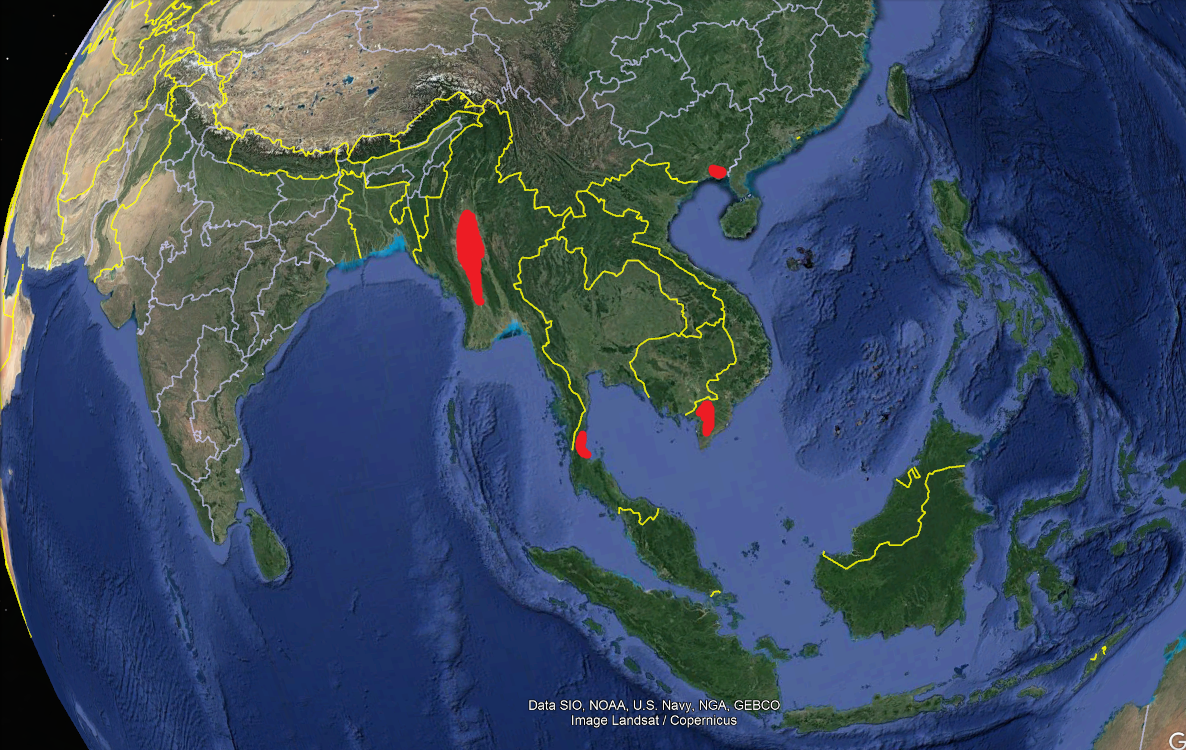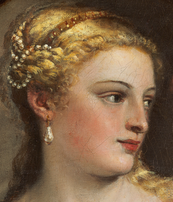Photo caption: "Two dodecahedra and an icosahedron on display in the Rheinisches Landesmuseum Bonn, Germany."
A Roman dodecahedron or Gallo-Roman dodecahedron is a small hollow object made of copper alloy which has been cast into a regular dodecahedral shape: twelve flat pentagonal faces, each face having a circular hole of varying diameter in the middle, the holes connecting to the hollow center. Roman dodecahedra date from the 2nd to 4th centuries AD and their purpose remains unknown. They rarely show signs of wear, and do not have any inscribed numbers or letters.
Or they're just decorations idk
This is what I think but I question, why this particular design? These things were found all over the Empire, why did this particular shape become so popular in Rome? We it some kind of inside joke? Cultural reference? Meme?
This is what I think but I question, why this particular design?
looks cool, hard to make, but not too hard
I like to think I'm pretty creative, but I'm struggling to figure out how these could possibly benefit a sexual experience, so now I'm wondering what you owls are getting up to out there in the forest with arcane, ancient shapes.
You don't need to tell me, I'm just saying - I strongly suspect you all are doing crazy sex magick rituals out there, and I support it. Lmk if there's anything I can do to help - bells, candles, herbs, wine, whatever.
The smallest ones are apparently about 1.6 inches wide, so someone could definitely fit it in a couple of orifices if they wanted to for some reason, without trauma from stretching (but probably from cuts and rubbing). With the openings, you could get some string and make a type of bead.
I'm sorry this is really gross and I'm not even into that sort of thing, I was just think of it purely as a creative exercise and then I looked at what I wrote.
They were also found commonly in the Pyu states (Burma), Óc Eo (Southern Vietnam), Khao Sam Kaeo (Peninsular Thailand), and Hepu (Guangxi)
https://journals.openedition.org/archeosciences/docannexe/image/2072/img-3.jpg
https://journals.openedition.org/archeosciences/2072https://go.gale.com/ps/i.do?id=GALE%7CA398627717&sid=googleScholar&v=2.1&it=r&linkaccess=abs&issn=0003598X&p=AONE&sw=w&userGroupName=nysl_oweb&isGeoAuthType=true&aty=geo
If they got there through Roman trade or cultural diffusion, it's interesting how they seemingly skipped over India and China. Peninsular Thailand is a very remote place!
Also the ones from Rome come mostly from France, which is also interesting
I drew a map of the SEA sites they're found in
Show
So it's definitely not a Silk Road trade route, and probably ended up there through Indian ocean trade routes. Yet, they somehow seem to be absent from India.It may also indicate that the majority of Rome's high-skill blacksmiths came from France. The wiki article states they may have been used as a "test" to display the skill of a blacksmith, which if true, would also mean they had no commercial purpose, and that their presence in SEA was the first time they were sold as items of value. The SEA ones also seem to be more commonly made of gold instead of bronze, which further supports this. The smallest ones in Europe were a small 1.6 inches in diameter, which further supports this, showing off one's metalworking intricacy.
wild inductive theory is that some merchant from Southeast Asia physically went to Europe, maybe even France, saw them, thought they were cool and brought back the idea, eventually developing a market in the local area and spreading it to other SEA states and eventually producing them indigenously. Otherwise it can't be explained why they're absent from India and the Mideast.
Maybe the people in India and the mideast thought they were trash
It's not really possible for thousands of people to all reject something in 2 separate continents (MENA and India) and then have thousands of people spontaneously liking the same thing in 1 different one (Southeast Asia). Differences like that have to stem from the luck of 1 individual.
example: anime was less popular in anglo America and more popular in Latin America. But it still got popular later on, and even during the 90s still enjoyed low level popularity in the US.
It's however very possible for 2 continents to miss something because it was never intended for them to see or buy, while 1 person from another continent accidentally sees it and develops a market for it.
For example, why do westerners buy handmade crafts from India? Because it's different and it looks different and interesting. Meanwhile most of the actual Indian people making those traditionally did so for survival, and you wouldn't see any non-bourgeois people buying those things
Or the idea of Turmeric supplements. Nobody in India takes turmeric supplements, they just eat turmeric. But some westerner saw this and got the idea to market it in his own country as a supplement. same deal
(also it's pronounced TER-MER-ICK not TUMOR-ICK, this is the literal english language even, idk why english speakers pronounce it like that)
KFC exists everywhere except for "bad country"
https://i.redd.it/vv4riaoxftl31.png
Idk, they look like they're meant to hold the prince of an alien race imprisoned in an astral realm to me.
They were probably used for DnD before Romans discovered numbers; they'd get in an encounter, roll one of these and then point to the top facing section and tell the Coliseum Master "I got one of those". I'd imagine they were probably really eager to finally find numbers to make the whole process much easier.
That or they were still trying to discover lameness; they'd put them on the front doorstep of someone they disliked and it was the starting point of the phrase "you've just been served" except they'd be like "you've just been diced".
maybe it's how smiths proved their competency?
I can smith to any specification you like, nothing is too complicated! Don't believe me? Just look at my
Intricate Thing!They were found in coastal Southeast Asia, but not in India/China/MENA
my inductive theory is that this was a very specific niche market borne from a Southeast Asian merchant who saw these in Europe and adopted the idea to sell them as trinkets back in SEA. The fact that they were never found anywhere else means nobody really thought about selling them. In fact there might have even been a stigma against selling them, if they were used as a test of skill, basically buying your skill instead of earning it.
The SEA ones are also often made of gold, while the European ones are made of bronze. The Europeans who had them valued them, because they were found among coins, but they were usually made of cheaper metal like bronze, which IMO strengthens the "test of skill" argument
Gold is an easier metal to work with than bronze I believe, to add to your theory
true, but I think they wanted gold because it looked pretty
i've seen this offered as a potential explanation as well as being used for textiles/sewing in some way that i can't remember
Oh, yeah the raised noduals at the corners would let you pull the fabric taunt while keeping it elevated from the surface and you can reach your hand through the hole to grab your needle (...wait, could you? How big are these things?)
Instances range in size from 4 to 11 centimetres (1.6 to 4.3 in).
They're pretty small, turns out.
small enough to poke a needle all the way through, hah! my baseless speculation still holds!
Someone was saying that they were used for knitting gloves, but someone else was saying that's not true, I forget why
The ones with holes are for measuring servings of spaghetti.
The ancient roman equivalent of desk decoration. Something you think looks nice, so you bring it to the office and set it on your desktop.
That or as someone else said you can do some s*x with it.
https://www.poewiki.net/wiki/Prime_Alchemical_Resonator
You use them for fossil crafting, of course.
Lmao you guys don't know what these were for
I wish they'd make a comeback

The bottom right looks so much like the astral prism from BG3.
I can't help but wonder if making the prism look like that is intentional.
















